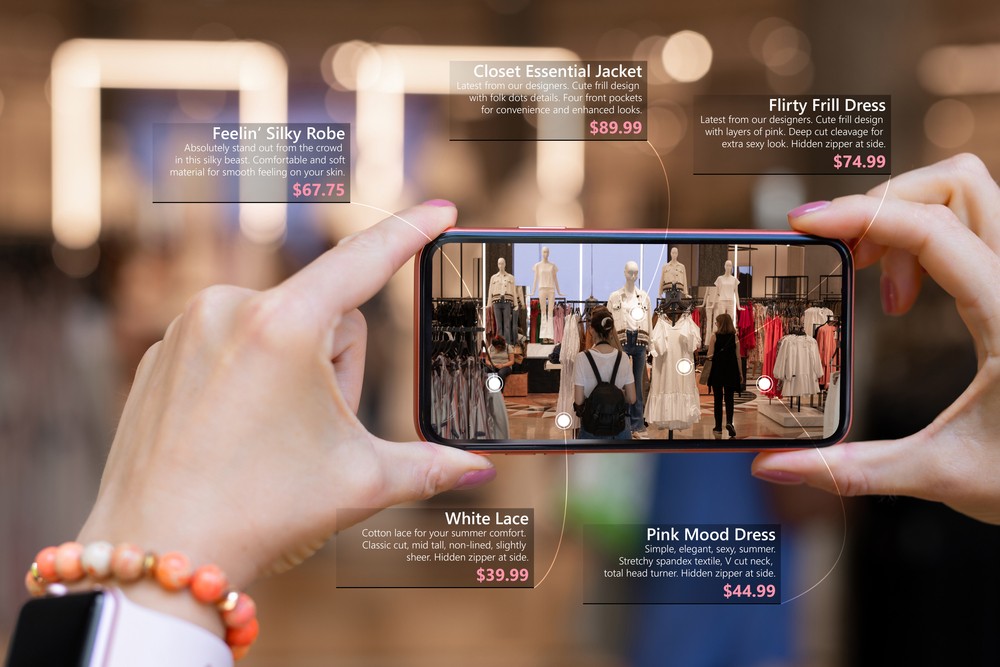

How Augmented Reality is Changing Retail
The retail industry has undergone significant transformations in recent years, and one of the most exciting developments is the integration of augmented reality (AR) technology. AR is revolutionizing the way customers interact with products, and retailers are leveraging this innovative technology to create immersive, engaging, and personalized shopping experiences. In this article, we’ll explore the ways AR is changing retail and what this means for the future of the industry.
Enhancing the In-Store Experience
One of the primary ways AR is transforming retail is by enhancing the in-store experience. Traditionally, customers would visit a physical store, browse through products, and seek assistance from sales associates. With AR, customers can now use their mobile devices to scan a product and access additional information, such as product demos, reviews, and tutorials. This adds a new layer of interactivity to the shopping experience, making it more engaging and informative.
For example, IKEA’s AR app, IKEA Place, allows customers to see how furniture would look in their home before making a purchase. Using their mobile device’s camera, customers can superimpose 3D images of IKEA products onto their real-world space, providing an accurate representation of how the product would fit and look. This feature has been incredibly popular, with over 10 million downloads since its launch.
Virtual Try-On and Makeup
Another area where AR is having a significant impact is in virtual try-on and makeup. With AR, customers can virtually try on clothes, accessories, and makeup without having to physically put them on. This feature is particularly popular in the beauty and fashion industries, where customers can experiment with different looks and products without any hassle or commitment.
Sephora’s Virtual Artistry app is a prime example of this technology in action. Using AR, customers can try on different makeup looks, from subtle everyday styles to bold, glamorous looks. The app even allows customers to virtually try on different lip shades, eyeshadows, and other products, making it easier to make informed purchasing decisions.
Personalized Shopping Experiences
AR is also enabling retailers to create personalized shopping experiences tailored to individual customers’ preferences and needs. Using machine learning algorithms and customer data, AR can provide customers with relevant product recommendations, offers, and content.
For instance, fashion retailer, Topshop, has developed an AR-powered chatbot that helps customers find products based on their personal style and preferences. The chatbot, named "Tops," uses AI-powered conversations to recommend products, offer styling advice, and even provide exclusive offers and promotions.
Streamlining the Shopping Process
AR is also streamlining the shopping process, making it faster and more convenient for customers. AR-powered kiosks and screens are being used in-store to provide customers with easy access to product information, reviews, and tutorials. This reduces the need for customers to search for information online or seek assistance from sales associates, freeing up staff to focus on more value-added activities.
Inventory Management and Logistics
AR is also having a significant impact on inventory management and logistics. With AR-powered warehouse management systems, retailers can track inventory levels, optimize stock placement, and streamline the order fulfillment process. This reduces errors, increases efficiency, and enables retailers to respond quickly to changes in demand.
Impact on Brick-and-Mortar Stores
The rise of AR is often seen as a threat to brick-and-mortar stores, but in reality, AR is actually helping to revitalize physical retail. By providing customers with immersive and engaging experiences, AR is enticing customers back into physical stores. According to a study by Retail Dive, 61% of customers prefer to shop at stores that offer AR experiences.
Furthermore, AR is enabling retailers to create hybrid stores that combine the benefits of online and offline shopping. For example, some retailers are using AR to create virtual "endless aisles" that allow customers to browse and purchase products that are not physically available in-store.
Challenges and Limitations
While AR is undoubtedly transforming retail, there are still challenges and limitations to its adoption. One of the primary concerns is the cost of implementing AR technology, which can be prohibitively expensive for smaller retailers. Additionally, there are technical issues to consider, such as ensuring seamless integration with existing systems and infrastructure.
Another challenge is ensuring that AR experiences are intuitive and user-friendly. If the technology is too complex or confusing, customers may be put off, which could ultimately harm sales and brand reputation.
Conclusion
Augmented reality is revolutionizing the retail industry, providing customers with immersive, engaging, and personalized shopping experiences. By enhancing the in-store experience, providing virtual try-on and makeup, and streamlining the shopping process, AR is helping retailers to stay competitive in a rapidly changing market.
While there are challenges and limitations to its adoption, the benefits of AR far outweigh the costs. As the technology continues to evolve and improve, we can expect to see even more innovative applications of AR in retail.
In the future, we can expect to see AR become an integral part of the retail landscape, with retailers using the technology to create seamless, omnichannel experiences that blend online and offline shopping. As customers increasingly expect personalized, interactive, and engaging experiences, retailers that fail to adopt AR risk being left behind.
In conclusion, AR is changing retail for the better, and retailers that are willing to invest in this innovative technology will be rewarded with increased customer loyalty, retention, and ultimately, revenue growth.




